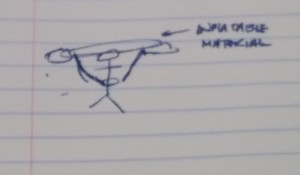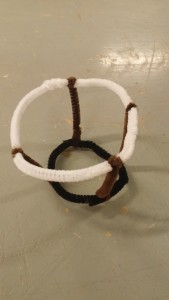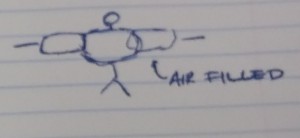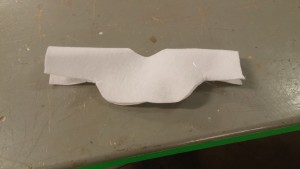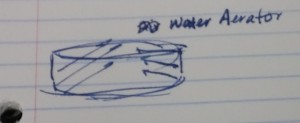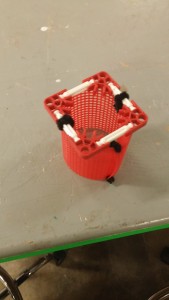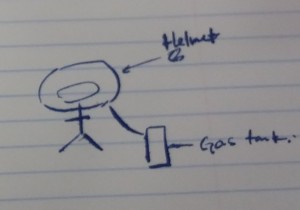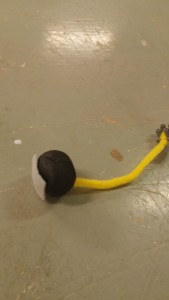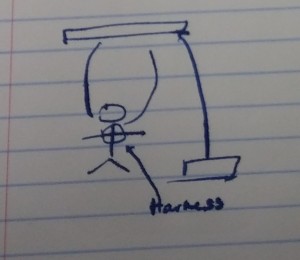In this project I was tasked with creating prototypes that can aid Liam, a patient suffering from severe ataxia, in swimming. Out of my brainstorming session, I have chosen 5 designs that I have made into low prototypes.
The first design is a ring of air filled floating devices that will be attached to Liam’s waist with polycarbonate. This design was appealing to me because it allows Liam to have wide range of motion while he is upright in the water, although it is not very effective if he wants to be parallel with the water. This design also minimizes contact with Liam which ensures that he will be comfortable with the device. In order to create this device, I used white to represent floating material since air-filled plastics were not readily available.
The second design is a simple air filled harness inspired by simple swimming aids I used in my childhood. This device is more sophisticated because it will be made to fit Liam and it will have a larger air capacity ensuring enough buoyant force. The disadvantage of this device is that a large amount of rapid motions might cause instability. The major advantages of this device would be the low cost and ease of use. Again when I went to prototype this device, I used white to denote air filled floating material.
The third design is a ring that would be attached around Liam’s upper body and will pump aerated water at an angle in the upright direction. This water pumping will propel Liam’s body upward which will aid in keeping him upright and safe. During prototyping, I used mesh to communicate that the water would pass through the ring, and I used the Knex as a means of attaching the device to Liam.
In my fourth design, I decided to create a helmet that would seal on Liam’s body and it would be connected to an oxygen tank. This is very much like a helmet a scuba diver would use, however it would be cheaper because it does not need to resist water pressure as much. This device would be very useful for Liam because it would give him complete freedom in terms of motion since there would be very little factors that would constrain his motion. However, this solution might be expensive to develop and maintain. For by prototype, I used playdoh and cloth to create the helmet and a pieces of Legos for the oxygen tank.
In my fifth design, I created a harness attached to a pole that would erected from the ground nearby the pole. The benefits of this design would be that it would be very safe for Liam since the only way he can drown would be either the physical failure of the device. However, it might not be the most comfortable for him so lots of padding is needed.
